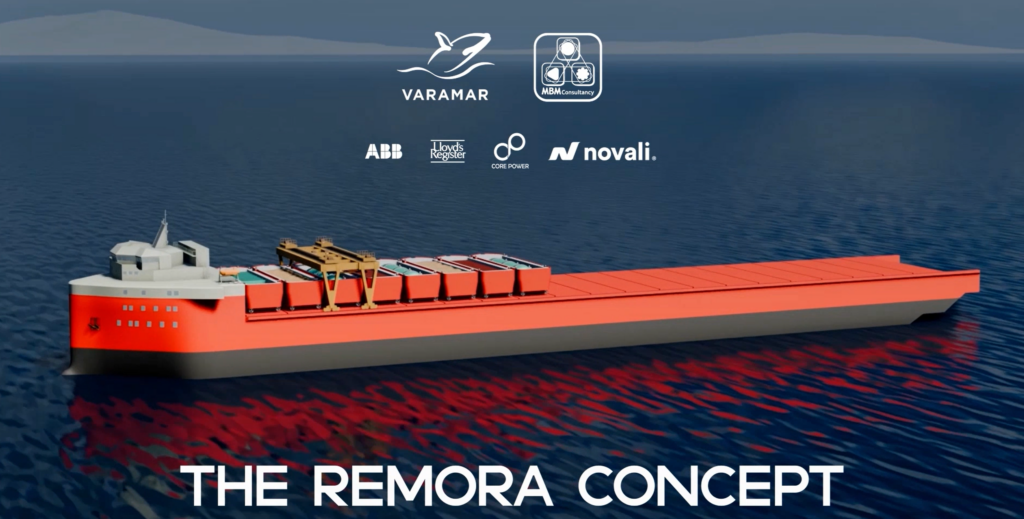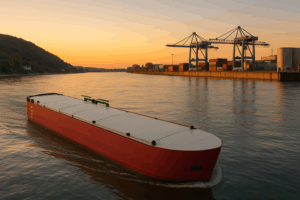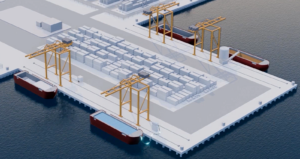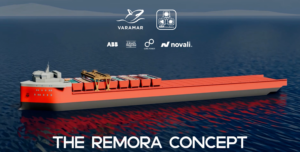
Nuclear power for shipping offers significant advantages, such as the potential for longer operational ranges and reduced reliance on fossil fuels. However, there are several issues and challenges associated with its implementation. These include:
1. Safety Concerns
- Accidents and Radiation: The risk of nuclear accidents or leaks, though rare, can be catastrophic. Any mishap could result in radioactive contamination, which would have severe environmental and human health impacts.
- Nuclear Waste: Handling and disposing of spent nuclear fuel from reactors is a major issue. Managing the waste long-term, especially in the case of ships, adds complexity and risks, especially if ships need to be decommissioned or if accidents occur at sea.
2. Cost and Infrastructure
- High Initial Cost: Nuclear-powered ships are expensive to build and maintain. The construction of reactors for ships requires specialized technology and expertise, leading to higher upfront costs.
- Regulatory Compliance: Nuclear vessels must adhere to strict regulations and certifications, which require heavy investment in compliance with international safety standards, such as those set by the International Atomic Energy Agency (IAEA) and the International Maritime Organization (IMO).
- Fuel Supply Chain: Establishing a global supply chain for nuclear fuel and a network for refueling ships at sea poses logistical and security challenges.
3. Public Perception and Political Resistance
- Opposition to Nuclear Technology: Public perception of nuclear power, often shaped by historical accidents (e.g., Chernobyl, Fukushima), can be a significant hurdle. Some regions or countries may have strong opposition to nuclear-powered ships operating near their coasts.
- Regulatory Barriers: Many countries have policies that restrict or prohibit the use of nuclear power for civilian purposes, including shipping. This could hinder the widespread adoption of nuclear-powered vessels.
- Security Concerns: The presence of nuclear materials on ships can also raise concerns related to terrorism, piracy, and theft. Ensuring the protection of nuclear fuel from such threats is a critical issue.
4. Environmental Impact
- Nuclear Waste Disposal: While nuclear power doesn’t emit carbon during operation, the long-term disposal of radioactive waste remains an environmental challenge. This is especially difficult for ships, where waste management at sea could be more complicated than on land.
- Cooling Requirements: Nuclear reactors require a large amount of water for cooling, which could create local environmental concerns. In areas where water is scarce or temperatures are high, this can add complexity to the operation of nuclear-powered ships.
5. Technological and Engineering Challenges
- Reactor Design for Marine Use: Nuclear reactors used in shipping need to be compact, efficient, and safe under varying sea conditions. Designing a reactor that is small enough for a ship while maintaining high safety and performance standards is a significant engineering challenge.
- Maintenance and Lifespan: Regular maintenance and monitoring of nuclear reactors are essential. Ships would need to have specialized teams and facilities to manage nuclear reactors, which could make operational logistics more difficult.
6. Decommissioning
- End-of-Life Disposal: At the end of a ship’s life, decommissioning a nuclear-powered vessel is far more complicated and costly than with conventional ships. The process involves safely removing and storing nuclear reactors and radioactive materials, which could involve decades of work.
Despite these challenges, nuclear-powered shipping has been considered for large vessels like aircraft carriers and submarines, where the benefits of long-range and energy efficiency outweigh the drawbacks. However, scaling this technology for commercial shipping is still far from being fully realized.





